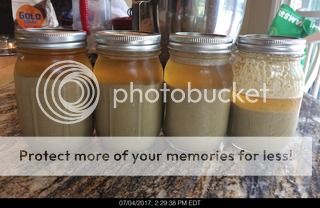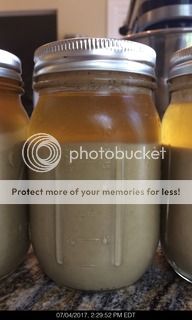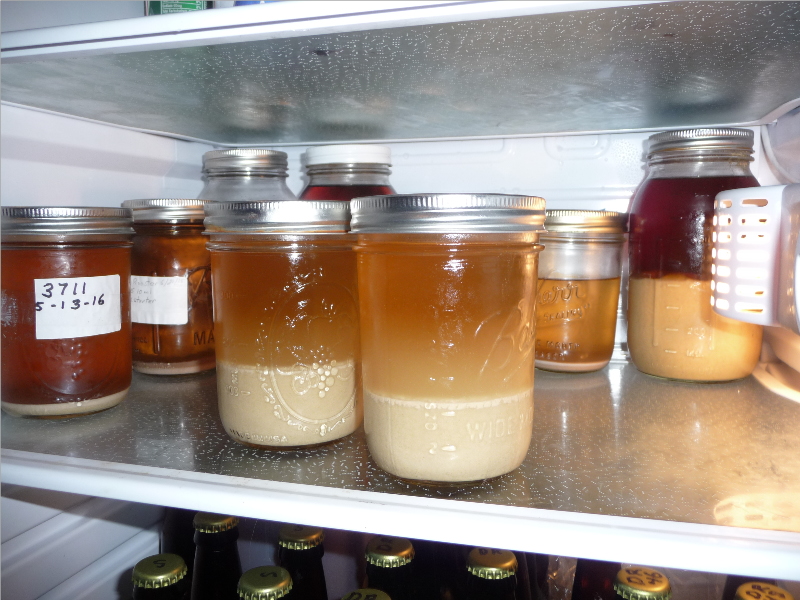ChuckS1
Well-Known Member
- Joined
- Oct 23, 2014
- Messages
- 100
- Reaction score
- 38
So a couple of days ago I bottled 5.5 gallons of a pilsner that used WLP833 in a 3 liter starter. I used a muslin bag to contain the hop pellets, so all that was in the fermenter was the yeast and cold break. I also used gelatin to clear the beer and cold crashed it for 7 days prior to transfer to my bottling bucket. I swirled the trub and yeast that was at the bottom of my conical fermenter and got about 3 1/2 pints of slurry. After storing them in the refrigerator for a couple of days, I don't see a separation of the yeast and trub. Here are pics of what I have. I was expecting to see three layers (beer, yeast and trub). Instead, I just see two layers.

A closeup shows no separation between the trub and yeast.

I was planning to reuse this yeast in an Octoberfest lager recipe later this week. I'm a little hesitant now, since I'm not sure I want to add all that trub back in. Am I worried about nothing? My gut instinct is to go out and buy more yeast. What do you think? Thanks in advance.

A closeup shows no separation between the trub and yeast.

I was planning to reuse this yeast in an Octoberfest lager recipe later this week. I'm a little hesitant now, since I'm not sure I want to add all that trub back in. Am I worried about nothing? My gut instinct is to go out and buy more yeast. What do you think? Thanks in advance.



